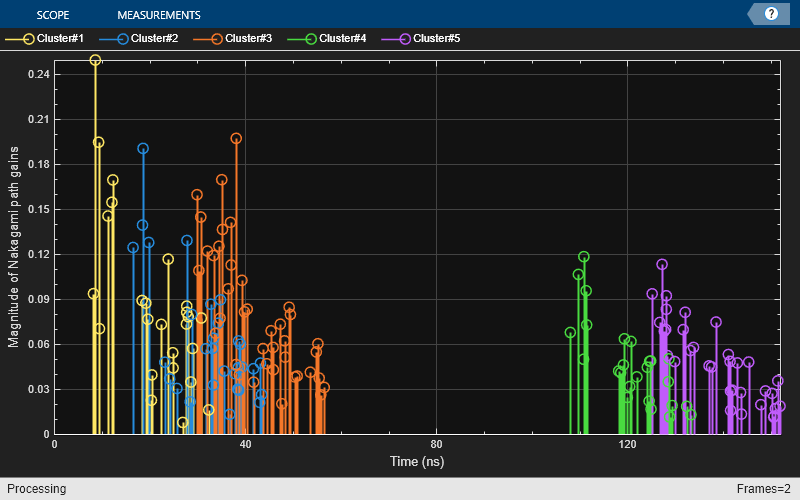uwbChannel
Description
The uwbChannel
System object™ filters an input signal through a UWB IEEE®
802.15.4™ a/z/ab channel as described by [1]. For more information, see
the Algorithms
section.
To filter an input signal through a UWB channel:
Create the
uwbChannelobject and set its properties.Call the object with arguments, as if it were a function.
To learn more about how System objects work, see What Are System Objects?
Creation
Description
uwbchan = uwbChannel
uwbchan = uwbChannel(type,los)Environment property to the value in
type and the HasLOS property to the value in
los.
uwbchan = uwbChannel(___,Name=Value)uwbChannel(SampleRate=2) sets the
input signal sample rate to 2.
Properties
Usage
Syntax
Description
Input Arguments
Output Arguments
Object Functions
To use an object function, specify the
System object as the first input argument. For
example, to release system resources of a System object named obj, use
this syntax:
release(obj)
Examples
Algorithms
The uwbChannel
System object enables modeling of UWB channel environments described in [1]. The capabilities
implemented include:
Environment-specific parameterization of the steps that follow.
Application of distance- and frequency-dependent path loss.
Modified Saleh-Valenzuela model [2] that implements these cases:
A single cluster case with regular path spacings. This case applies when there is no line of sight and industrial or indoor office environment.
A general case with random number of clusters and path arrivals. Multipath components are grouped in distinct clusters.
Determination of path amplitudes with distinct Nakagami distributions (small-scale fading).
For a detailed algorithmic description of channeling modeling capabilities available when
you use the uwbChannelSystem object, see the UWB Channel Models example.
References
[1] A. F. Molisch et al., "IEEE 802.15.4a Channel Model-Final Report." Tech. Rep., Document IEEE 802.1504-0062-02-004a, 2005.
[2] A. Saleh and R. A. Valenzuela. “A statistical model for indoor multipath propagation.” IEEE J. Selected Areas Comm. 5 (February 1987): 128–37.
Extended Capabilities
Version History
Introduced in R2024a




